|
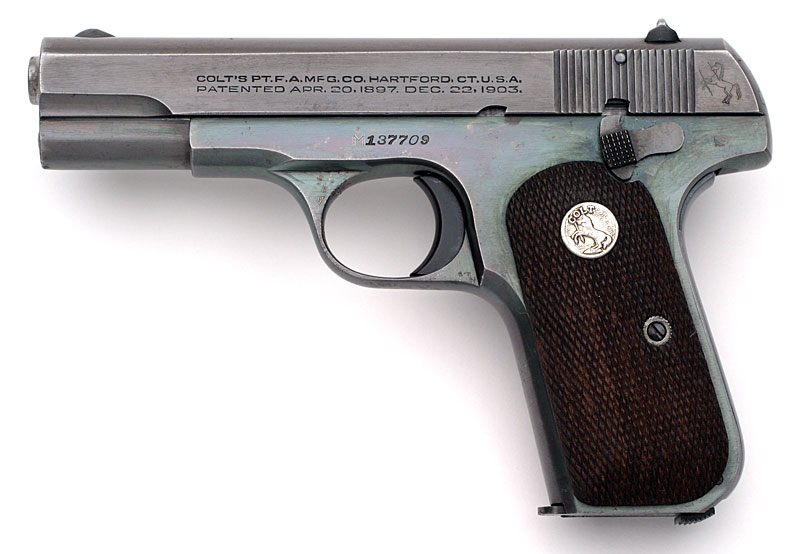
A Colt Model M .380 pistol issued to Major
General Alfred H. Johnson - On May 31, 1950, Brigadier
General Johnson was presented his Colt 1908 .380 caliber
sidearm, serial number M137709. Shipped to
Wright-Patterson Air Force Base, Dayton, OH. One of General
Johnson's most notable accomplishments was his work on the
development of and test piloting the first supercharged
cabin plane in 1936 for which he received the Distinguished
Flying Cross. This project was so significant that it
received the famous Collier Trophy for 1937.
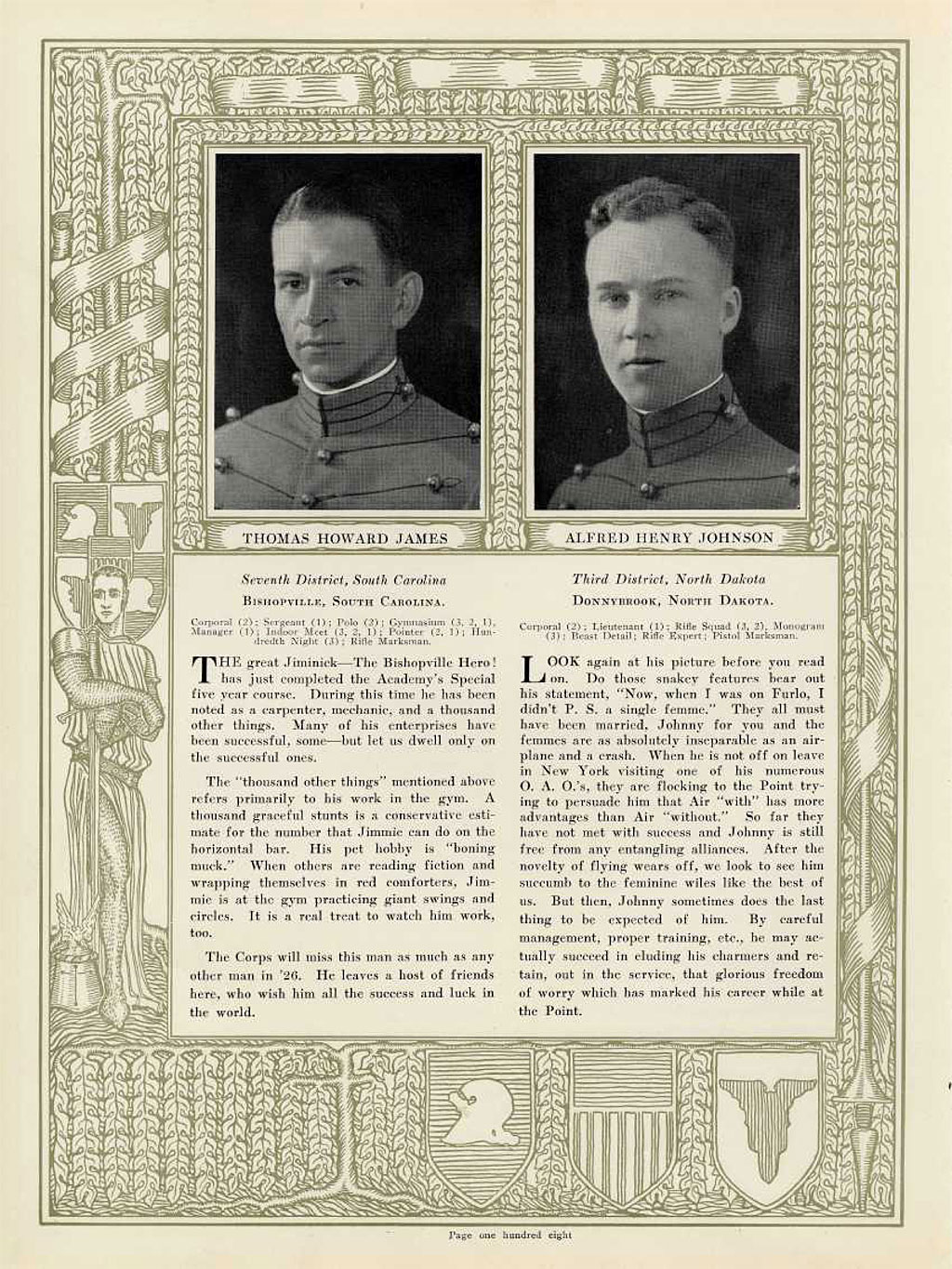
USMA The Howitzer yearbook, Class of 1926 -
Alfred H. Johnson (right side)
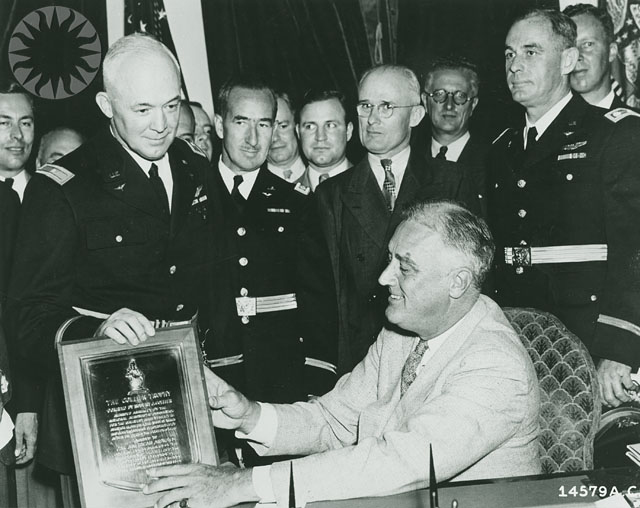
SI Neg. 2000-3735. Date: na...Official USAF
caption: Presentation of Collier Trophy for 1937 to U.S.
Army Air Corps. President F. D. Roosevelt seated at
desk, Gen. H. H. Arnold, accepting. Left to right, front
row: Brig. Gen. Henry H. Arnold, Major Carl F. Green, Dr.
John E. Younger, Lt. Col. Oliver P. Echols. Extreme right -
back row: Capt. Alfred H. Johnson. [Photo taken 16
September 1938.]..Credit: Unknown. (Smithsonian Institution)
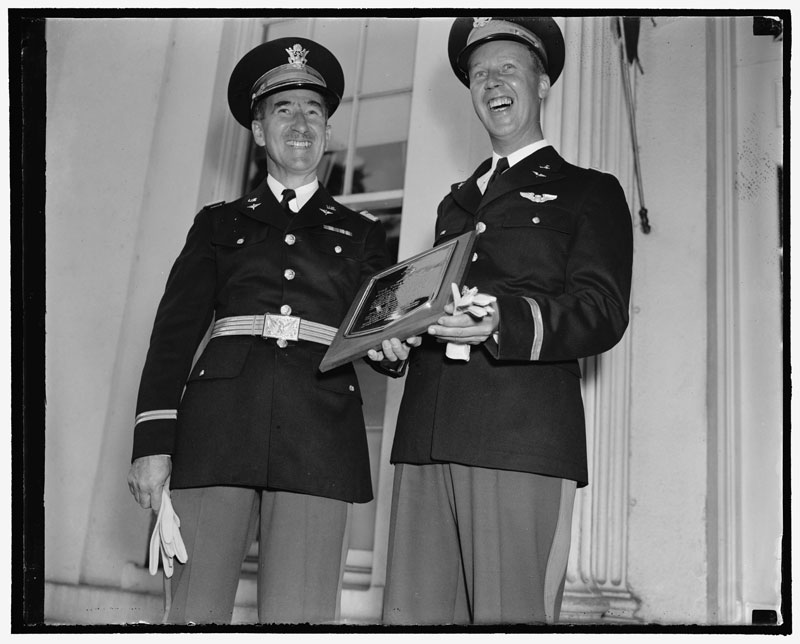
Winners of the Collier Trophy.
Washington, D.C., Sept. 16. The Collier Trophy, considered
aviation's highest honor, was won today by two army
aviators, they were credited with flying the first pressure
cabin airplane anywhere in the world. Maj. Carl F. Green,
left and Capt. Alfred H. Johnson, both of Wright Field,
Ohio, 9/16/38
Digital ID: (digital file from original negative) hec 25044
http://hdl.loc.gov/loc.pnp/hec.25044
Reproduction Number: LC-DIG-hec-25044 (digital file from
original negative)
Repository: Library of Congress Prints and Photographs
Division Washington, D.C. 20540 USA http://hdl.loc.gov/loc.pnp/pp.print
The Lockheed XC-35 was a twin-engine,
experimental pressurized airplane. It was the first American
aircraft to feature cabin pressurization. The distinction of
the world's first pressurized aircraft goes to the Junkers
Ju 49. The XC-35 was a development of the Lockheed Model 10
Electra that was designed per a 1935 request by the United
States Army Air Corps for an aircraft with a pressurized
cabin.

"M" marked example with M prefix on serial
number. Also present is the ordnance inspector's mark
located to the right of the thumb safety.
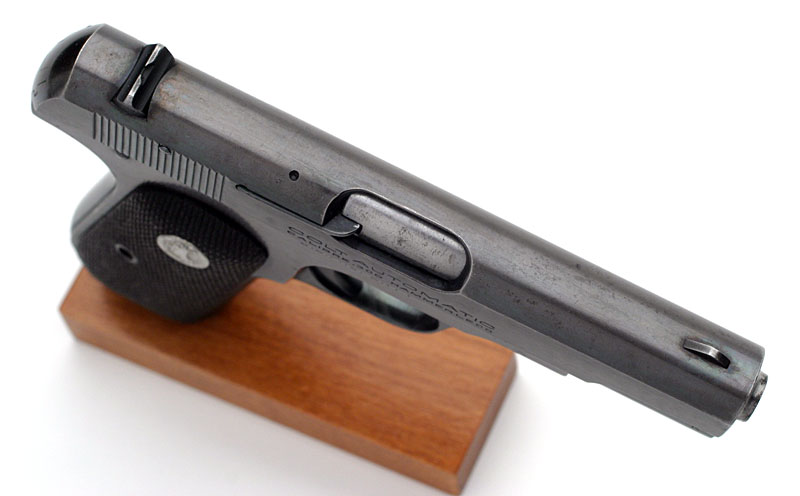
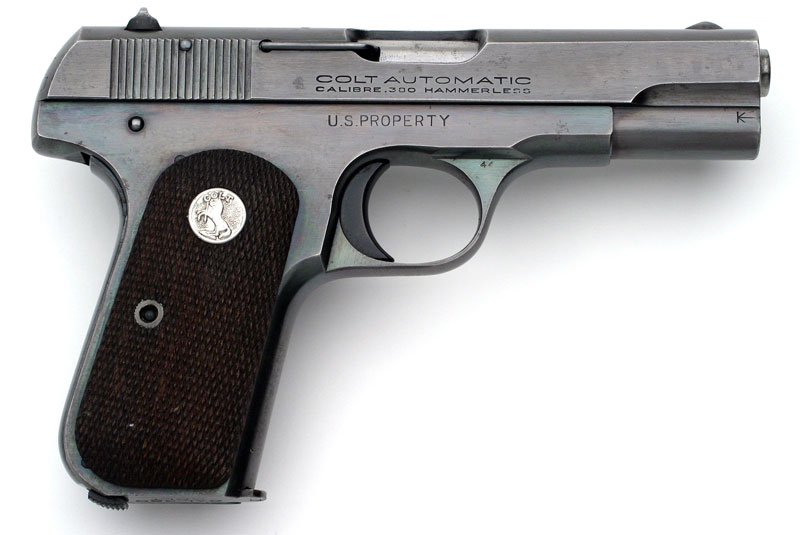
Right side.

U.S. PROPERTY mark on right side of frame
above trigger area.

This gun is accompanied by the original full blued "M"
marked magazine.
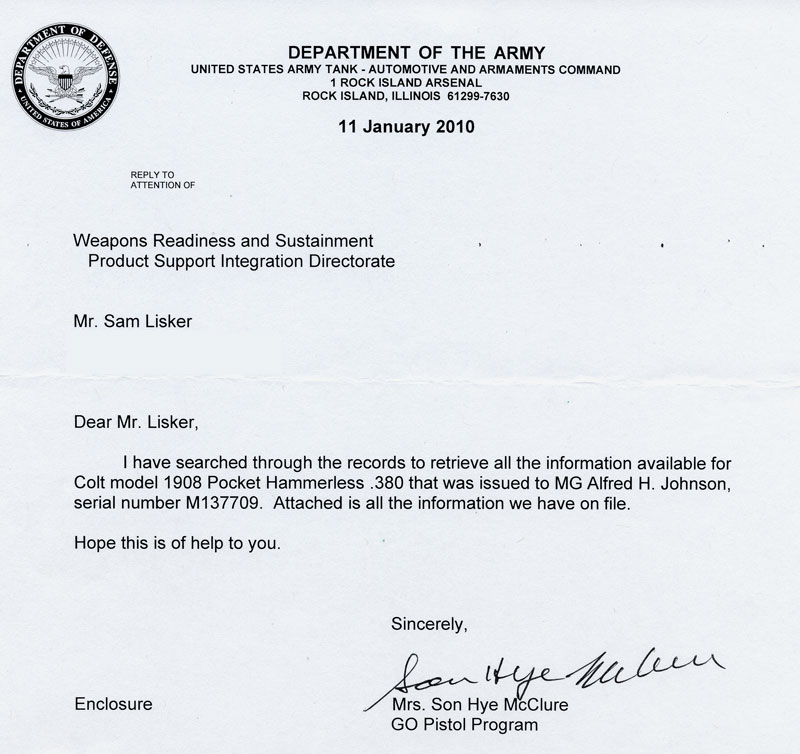
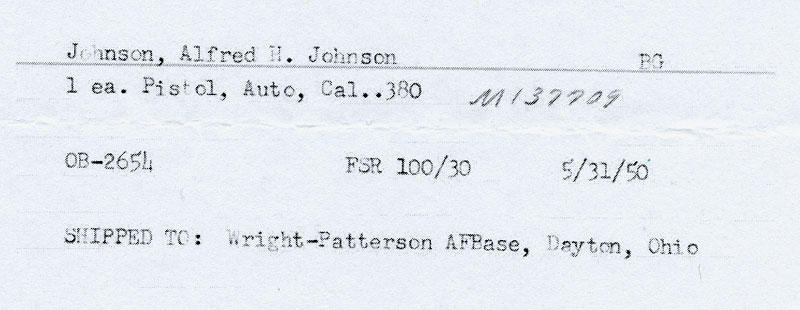
Major General
Alfred Henry Johnson
(September 11, 1904 - March 8, 1985)
Alfred Henry Johnson was born at
Donnybrook, N.D., in 1904. After attending the University of
North Dakota, a year later he entered the U.S. Military
Academy, graduated and was commissioned a second lieutenant
in the Air Service, June 12, 1926.
There is a record of an accident
involving Johnson on October 11, 1927:
| DATE |
PILOT |
AC |
SN |
LOCATION |
| 271011 |
JOHNSON, ALFRED H |
NBS-1 |
AS-68498 |
LANGLEY FIELD, VA |
Army Air Corps (Act of 2 July 1926),
worked on the development of and was the test pilot for the
first supercharged cabin plane in 1936 and received the
Distinguished Flying Cross. This project was so significant
that it received the Collier Trophy for 1937.
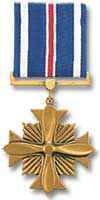 |
CAPTAIN
ALFRED H. JOHNSON
ARMY AIR CORPS
For service as set forth in the following:
CITATION:
The President of the United States of America,
authorized by Act of Congress, July 2, 1926,
takes pleasure in presenting the Distinguished
Flying Cross to Captain (Air Corps) Alfred H.
Johnson, U.S. Army Air Corps, for extraordinary
achievement while participating in aerial
flights. Despite a history of failures and
fatalities in connection with developments in
high level operations, Captain Johnson, with
utter disregard of his personal safety, served
as Pilot in the first successful test flights
ever to be performed in a pressure cabin
airplane. By his courage and skill as a pilot,
combined with a superior knowledge of
supercharged power plant operation, Captain
Johnson aided materially in bringing to the
United States Army Air corps the distinction of
first demonstrating practical high level
airplane operation.
Source:
http://militarytimes.com/citations-medals-awards/recipient.php?recipientid=7730 |
During the following 13 years General
Johnson held various assignments at Air Force bases
throughout the United States. In May 1939 he was assigned to
Air Materiel Command headquarters at Wright Field, Ohio as
an engineering officer. In April 1942 was appointed
Commanding Officer, Air Force Procurement District, with
headquarters at Detroit, Michigan, 1943 - 1945.
General Johnson went to the Philippine
Islands in June 1945 as deputy commander of the Fifth Air
Service Area Command, and three months later was named chief
of the Air Base Service Division of that command. He assumed
command of the Fifth Air Service Area Command in May 1946,
and of the Okinawa Air Materiel Area the following July. He
was appointed assistant chief of staff for materiel of the
A4 Far East Air Forces at Tokyo, Japan in January 1947.
In July 1948, General Johnson was
assigned to Air Materiel Command headquarters at
Wright-Patterson Air Force Base, Dayton, Ohio, and in August
1948 became assistant deputy to the commanding general for
Operations of Air Materiel Command. In September of 1949 he
achieved the rank of Brigadier General and was appointed
chief of the Industrial Planning Division of Air Materiel
Command, becoming chief of the Production Resources Division
there in February 1951.
The following November General Johnson was assigned to the
Munitions Board at Washington, D.C., as chief of the Office
of Petroleum Programs and executive secretary of the Joint
Petroleum Committee, and in August 1953 as Major General,
became chief, Office of Petroleum Programs, and chairman of
the Joint Petroleum Committee, Office, Secretary of Defense.
In December of 1953 the general was designated deputy
director for logistics plans, joint staff of the Joint
Chiefs of Staff, Office of the Secretary of Defense.
Retired 1957 Major General, Died
Harlingen, TX March 8, 1985.
His decorations include the Distinguished Flying Cross and
Distinguished Service Medal. He is rated a command pilot,
combat observer and aircraft observer.
Source:
http://www.af.mil/information/bios/bio.asp?bioID=5952
|